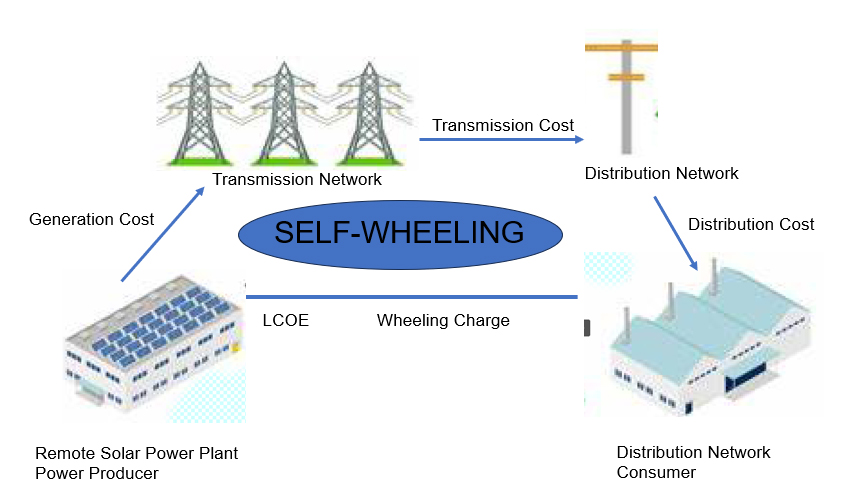Japan Solar Update: No.81 (Jan 29 ~ Feb 2, 2024)
Agency for Natural Resources and Energy (ANRE) under METI decided to tighten the rules and regulations of a self-wheeling scheme. ANRE plans to revise the guidelines of self-wheeling and clarify the condition as a measure against business operators who sell the wheeled electricity to other operators within electricity demand sites without self-consuming the electricity, which is called nominal self-wheeling, and those who borrow power generation facilities and become a titular operator to self-wheel the generated electricity. The new guidelines are applied to the projects which have not started grid connection procedures by the end of December 2023.
<Key points>
- With the expanding use of self-wheeling system, there have been many cases violating the purpose of the system, so the Ministry of Economy, Trade and Industry (METI) will revise the current guidelines and tighten the requirements for both the power producer side and consumer side
- On and after January 1, 2024, the acceptance of new applications for self-wheeling will be suspended until the revised guidelines come into effect
On the future of the self-wheeling system for expanding introduction of renewable energy
Status of the expanding use of self-wheeling
-With the increasing consumer needs for renewable energy due to its additionality, an increasing number of companies started the proactive use of self-wheeling, focusing on the fact that no surcharge for renewable energy is imposed
– Among the cases using self-wheeling, there are substantially many cases where operators are deemed to be procuring electricity from third parties and supplying it to other parties, violating the purpose of the self-wheeling system, etc.
Images of the business deemed to be violating the purpose of the self-wheeling system
Power producer side
Cases in which a business operator leases a power generation facility from other companies under a lease agreement, etc., and outsources the maintenance and management of the facilities, planning, etc., to external parties
Consumer side
1. Cases in which a self-wheeling contractor, etc., owns the power receiving facilities and the power is used by other parties
2. Cases in which a self-wheeling contractor, etc. receives power collectively and supply the power to several other parties within the location of demand (e.g., department stores and shopping malls)
Projects that do not conform to the purpose of the system should utilize renewable energy through offsite PPAs, etc.
↓
Current guidelines to be revised to tighten requirements for both the power generation side and consumer side
Clarification of the cases that are not eligible for self-wheeling
– When the applicant becomes a nominal manager*3 of a power generation facility developed or installed by another party, as a result of transfer*1 or lease*2, etc.
– When the applicant becomes a nominal manager of an power receiving facility installed by another party, as a result of transfer or lease, etc.
– When the applicant does not have a close relationship with the parties, within a single location of demand*4, to whom power is supplied
*1 Except for the case where the development investment is made by the applicant and the ownership is transferred based on a service contract, etc., upon completion of the power generation facility
*2 Lease agreements including transfer of ownership is included
*3 Transfer of power generation facilities is allowed only in cases where the transferor of the facility is a wholly-owned subsidiary of the applicant
*4 A close relationship is required between all of the parties to which power is supplied within a single location of demand
Necessary study will be constantly conducted, without excluding further tightening of requirements or revision of the system, depending on the situation in the future.
Coverage and timing of the new requirements
The new requirements will be applied to the projects that have not reached a certain point in the grid interconnection process (for extra-high/ high-voltage: already applied for consideration of interconnection; for low-voltage: already applied for a contract) by the end of December 2023.
Acceptance of new applications for self-wheeling will be suspended from January 1, 2024 onward, until the revised guidelines come into effect.
Figure 1 Summary of discussions on the ideal self-wheeling system toward expanding the introduction of renewable energy
Source: Materials of the 68th meeting of the Electricity and Gas Basic Policy Subcommittee (December 26, 2023), compiled by RTS Corporation

